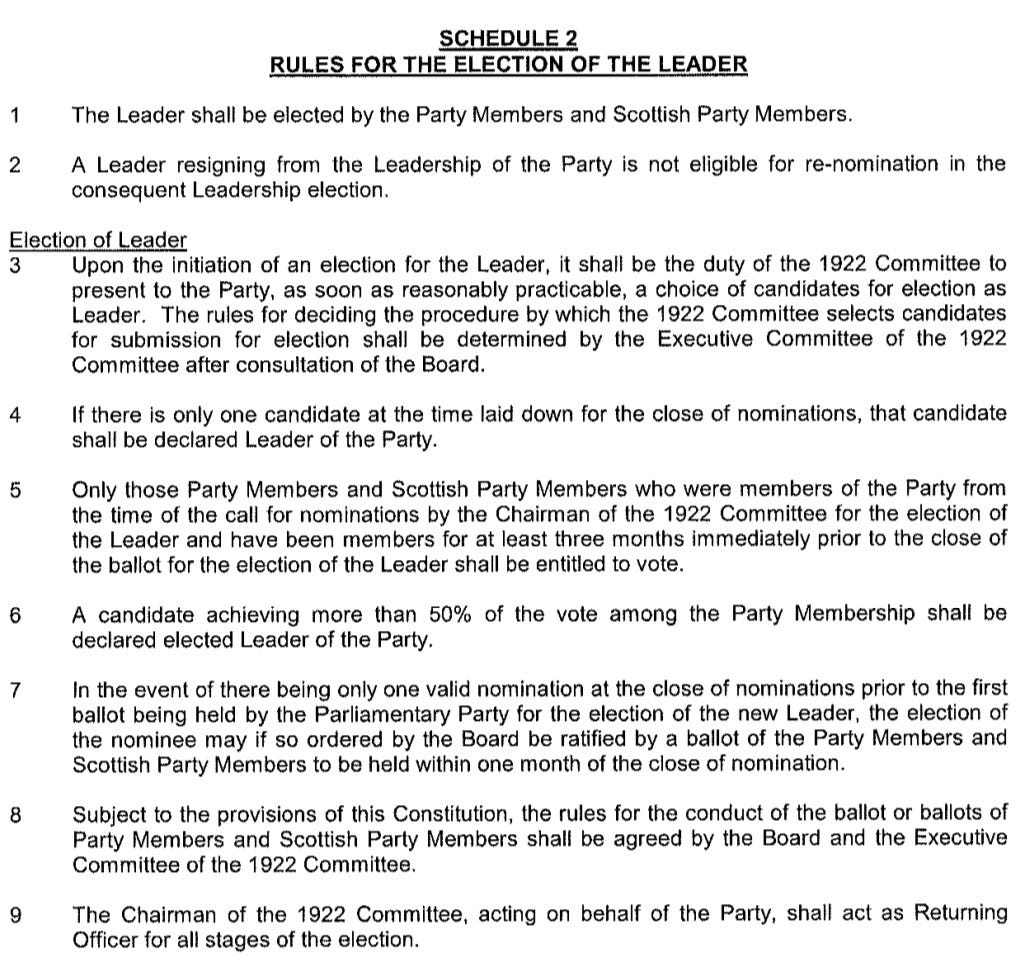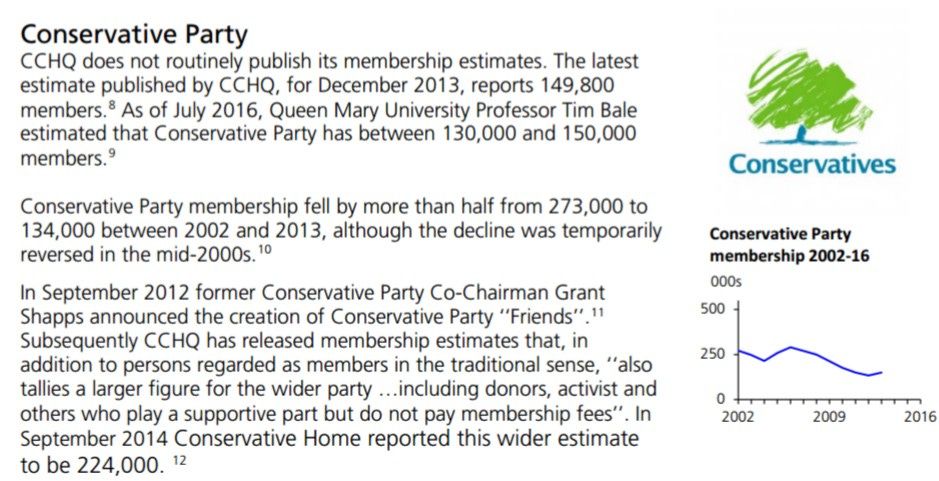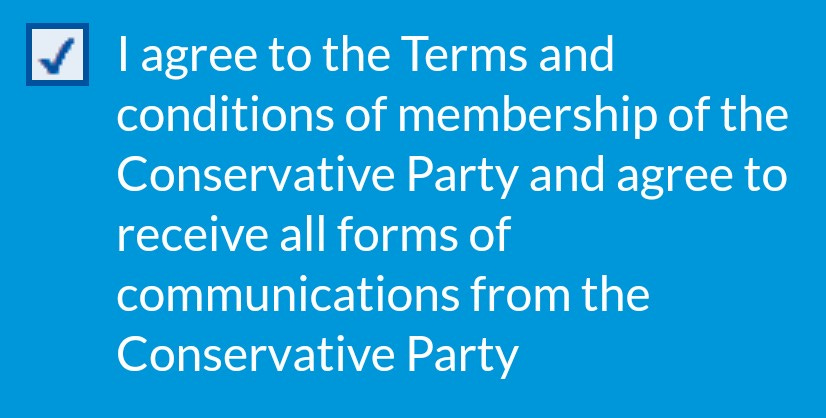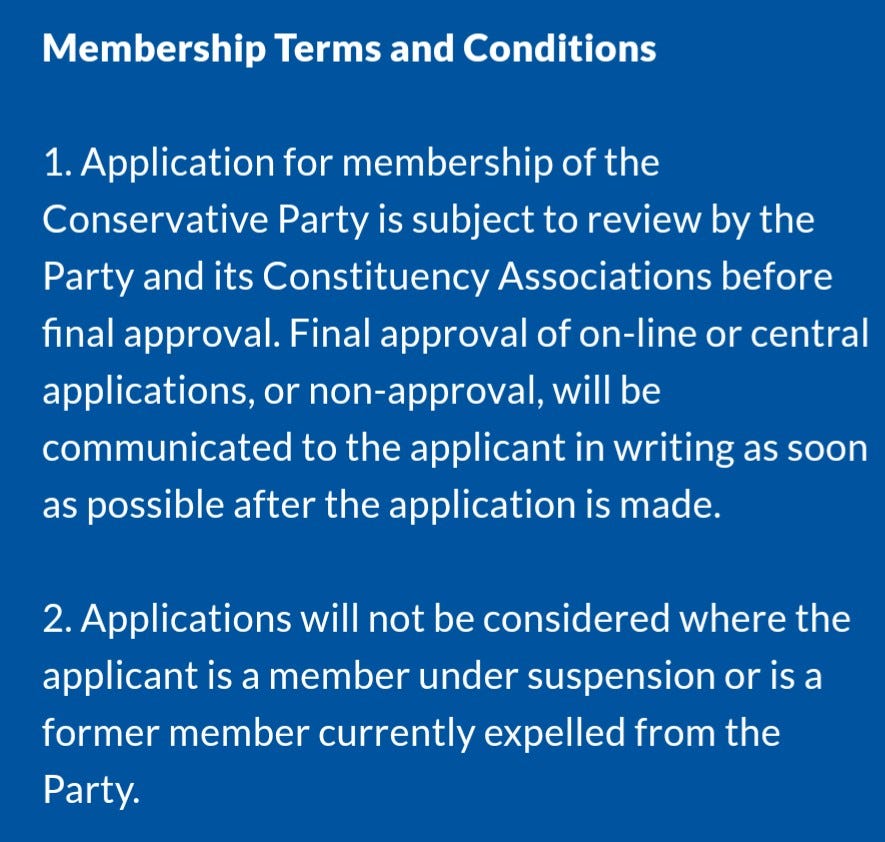How to choose the next Prime Minister - and influence Brexit
The candidates are lining up in the race to succeed Theresa May as next leader of the Conservative Party and - barring yet another General Election - Prime Minister.

They range, as can be seen, from the fantastically toxic Michael Gove to the public's choice, Ruth Davidson. The race looks certain de facto to be a third - in the space of little over a year - referendum on the nature of our future relationship with the EU.
The procedure whereby the leader is chosen is set out in Schedule 2 of the Conservative Party Rulebook.
Broadly, if there is more than one candidate - and after the disaster of Theresa May's premiership it is hard to imagine another act of anointment - MPs narrow that number down to two candidates and members then make the final decision.

Which members get to make the final decision? Well, Schedule 2 Rule 5 (see above) sets out two criteria. You have to be a member at the time of the "call for nominations" (and at the time of writing there has been none) and you have to have been a member for three months at the close of the ballot (presumably of Party Members) for the leadership.
So, unless the contest is over within three months (and remember: it has yet to even start) new members joining now will have a right to vote.
Joining costs £25 - or a mere £5 if you are under 23. This compares with the last Labour leadership election where becoming a "Registered Supporter" cost £25 whatever your age.
Most importantly of all, you will have a high degree of influence. The Conservative Party membership is low. This recent estimate from Professor Tim Bale (published by the House of Commons Library) gives a figure of between 130,000 and 150,000.

And, of course, turnout will be less than 100%. In the 2016 Labour Leadership election, for example, it was 78% but that may, given the febrile atmosphere, have been artificially high. In 2010 it was 72%. 72% of the middle figure of 140,000 is 101,000 so the winning candidate would need only 51,000 (rounding to the nearest thousand) votes. It is perfectly possible that just a few thousand could tip the balance.
Are there any catches?
Well, Rule 17.7 gives the Board of the Party an absolute discretion to cancel or refuse your membership. But nothing ventured nothing gained, you may think. And on a refusal - and I think likely a cancellation - you would get your money back.
Membership is open to those who share the Conservative Party's objects and values (see Clause 3 of the Rules). But they are (so far as I can see) nowhere stated.

You would - at least if the Labour Party found out (often they don't) - lose any membership of the Labour Party (see Chapter 2 Clause 1.4.B).
And you have to agree to the Terms and Conditions of membership of the Conservative Party.

But they are relatively modest.

If you want to choose the next Prime Minister - albeit from a shortlist - and influence Brexit... perhaps you should join the Conservative Party.

